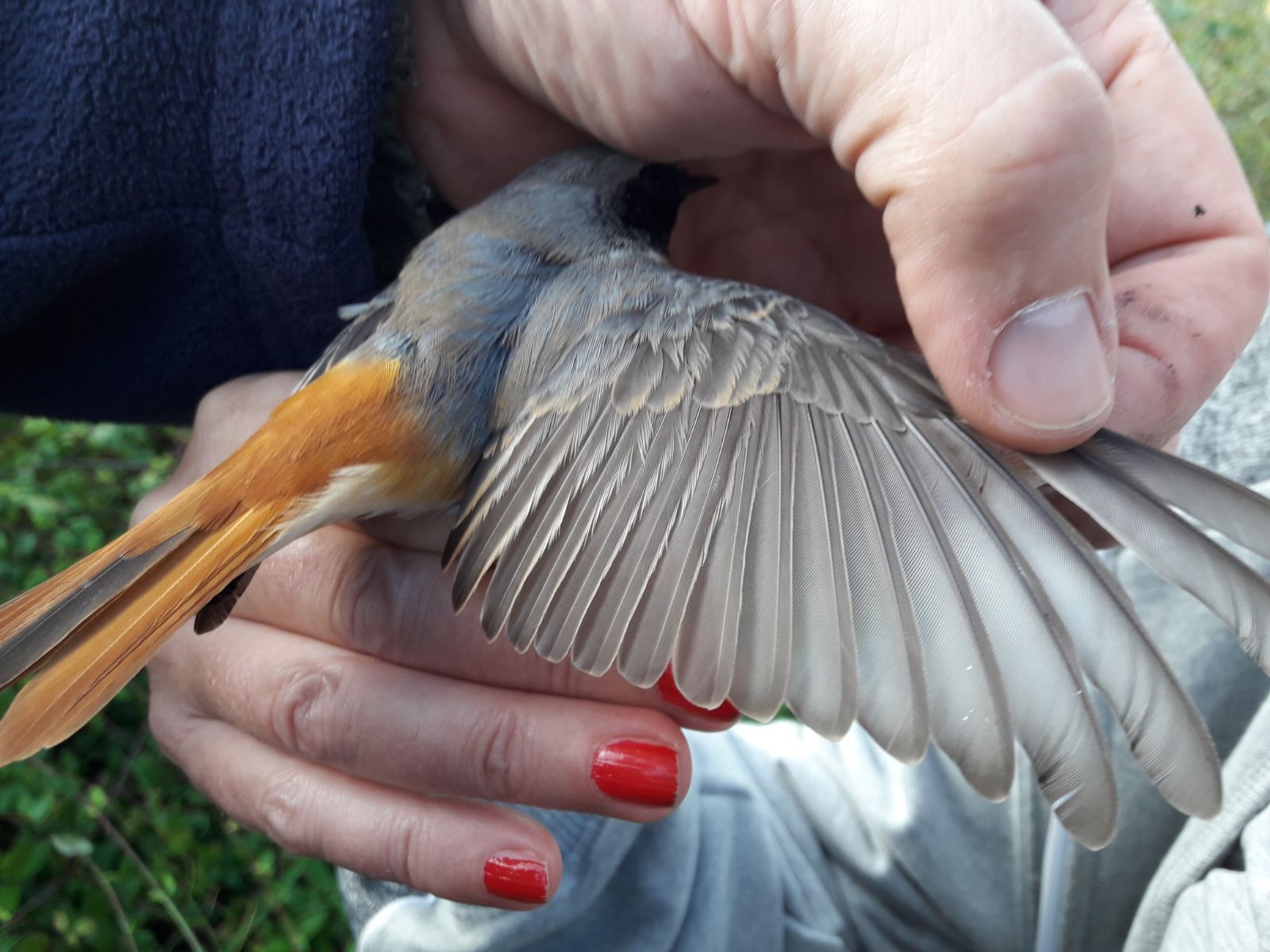Gekraagde Roodstaart
Phoenicurus phoenicurus · Common Redstart
 Gekraagde Roodstaart ·
Phoenicurus phoenicurus
·
04-11-2017 · C. D. (Damian) Romay
Gekraagde Roodstaart ·
Phoenicurus phoenicurus
·
04-11-2017 · C. D. (Damian) Romay
| Datum | 4 november 2017 |
|---|---|
| Locatie | Cabana de Bergantinhos (NW Galicia) |
| Fotograaf |
|
| Bekeken | 7474 × |
Possible 1w Phoenicurus phoenicurus samamisicus. Ringed and relesed by Francisco Rosende and Miguel Maestro (G. A. Hércules) at Anllóns river mouth, Cabana de Bergantiños (NW Galicia, 43.239, -8.899) on 4th November 2017. |
Discussie
Frank Neijts
·
4 november 2017 16:06, gewijzigd 4 november 2017 18:44
I think it's an adult (e.g. solid black lores and no moult limit in the greater coverts) male phoenicurus in which white edges to the tertials and inner primaries are quite normal. See for differences between phoenicurus and samamisicus: https://www.britishbirds.co.uk/wp-content/uploads/article_files/V102/V102_N02/V102_N2_34_47.pdf
Jan van der Laan
·
4 november 2017 18:32
Norman Deans van Swelm
·
4 november 2017 19:52
De titel staat mij zeer aan Jan. Dit is de eerste roodstaart met rode nagels die ik zie. Het is mij niet duidelijk waarom dit een Oosterse Gkr. is.
Geir Mobakken
·
23 februari 2024 17:48
Adult male nominate Common Redstart.
Vincent van der Spek
·
24 februari 2024 08:11, gewijzigd 24 februari 2024 08:12
I'd never seen this one. A Common Redstart indeed. And a 1cy indeed (contra Frank). Inner greater coverts moulted, outer ones with buffy instead of greyish edges (note tips are buff in both adults and immatures).
George Sangster
·
24 februari 2024 09:32
Martinez, N, Kirwan, GM & Schweizer, M 2023. Resolving disputed subspecies distribution limits, and revealing intraspecific intergradation, in the Common Redstart Phoenicurus phoenicurus using citizen science and museum data. Journal of Ornithology 164: 1-12.
This paper describes individual and geographic variation in the wing patch and other characters, and clarifies the range limits of samamisicus. The authors point out that second year birds are a pitfall for identification of samamisicus.
Frank Neijts
·
24 februari 2024 10:02
@Vincent: bedankt voor de correctie. Moet toen toch n klein black outje hebben gehad want niet alleen is het verschil tussen binnenste en buitenste grote dekveren prima te zien maar ook heb ik het daar over “inner primaries” waar ik uiteraard secondaries had moeten zeggen. ‘Verstand komt met de jaren’ zou mn moeder gezegd hebben maar op n gegeven moment kan et ook ‘gaat met de jaren’ worden natuurlijk…😎
Geir Mobakken
·
24 februari 2024 18:33
Vincent: At least we agree on nominate for this bird but isn’t it an adult? I thought blue-grey edges of all greater-coverts in combination with much black and just a small amount of white on throat and especially lores (see other pictures of it on this website) would age this bird as a second calendar-year or older. If you consider yourself a grown-up ringer I rest my case.
Gijs Woldhek
·
24 februari 2024 19:24
Dear Geir,
" If you consider yourself a grown-up ringer I rest my case." why this sentence?
Geir Mobakken
·
24 februari 2024 20:29
Gijs: No offence, rather the opposite. If Vincent is an experienced ringer (which I am not) I will gladly accept his judgement. Maybe he can answer himself if he feels the need.
Vincent van der Spek
·
24 februari 2024 20:46, gewijzigd 24 februari 2024 20:48
No, I hadn't seen any other pic, I didn't know there were any (a link would have been handy!). But here the wing (indeed) looks different.
Weird how the inner GC's look more bluish than the outer ones on the photo above this discussion and how difficult it is to judge the grey tones of the edges of the outer ones (well, apparently at least for me, on my phone). In hindsight the primary coverts do look adult.
So I was too quick on the draw, well seen! That sometines even happens to mature ringers that have handled a redstart or two ;-)
And sorry Frank! You were right all along.
Gebruikers van het forum gaan akkoord met de forumregels.
